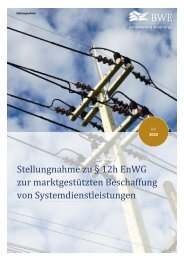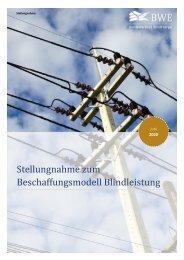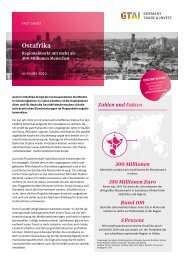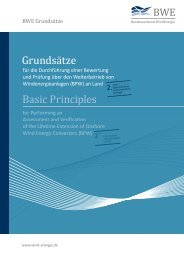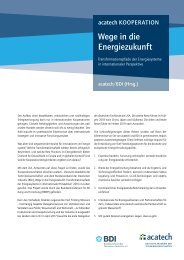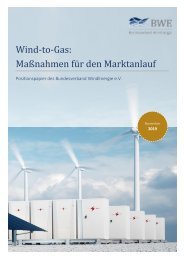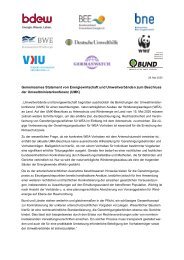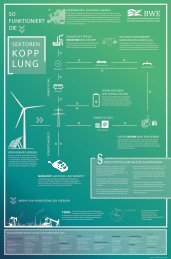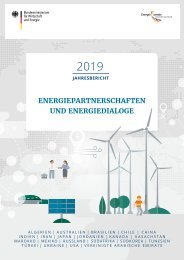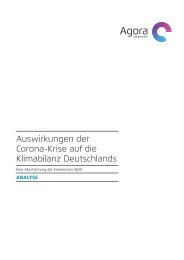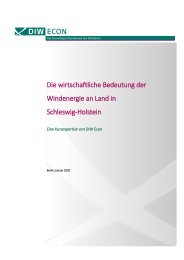vierter-monitoring-bericht-energie-der-zukunft-englische-kurzfassung
You also want an ePaper? Increase the reach of your titles
YUMPU automatically turns print PDFs into web optimized ePapers that Google loves.
10<br />
5 Buildings<br />
Where do we stand?<br />
Final energy consumption in buildings (i.e. heating<br />
energy) dropped by 12.4% in 2014 compared with the preceding<br />
year. This is largely due to the mild weather, but<br />
also to progress on efficiency. Energy demand for heating<br />
was down by a total of 12.3% from 2008. Given a linear<br />
extrapolation of the development in energy consumption<br />
between 2008 and 2014, it is unlikely that the target of<br />
cutting heating energy demand by 20% by 2020 will be<br />
reached.<br />
Primary energy requirements were 11.8% lower in 2014<br />
than in the year before. Primary energy requirements were<br />
down by a total of 14.8% from the 2008 reference year.<br />
What are the next steps?<br />
The implementation of the National Action Plan on<br />
Energy Efficiency (NAPE) will further reduce energy consumption:<br />
the Efficiency Strategy for Buildings and the<br />
strategy entitled “Climate-friendly Building and Housing”<br />
of the 2020 Climate Action Programme point the way to a<br />
virtually climate-neutral building stock by 2050. This<br />
means that the non-renewable segment of primary energy<br />
consumption is to fall by 80% from approx. 1,200 TWh in<br />
base year 2008 to around 240 TWh in 2050. To this end, a<br />
target corridor is being developed, permitting various combinations<br />
of reductions in final energy consumption and<br />
the increased use of renewable energy.



